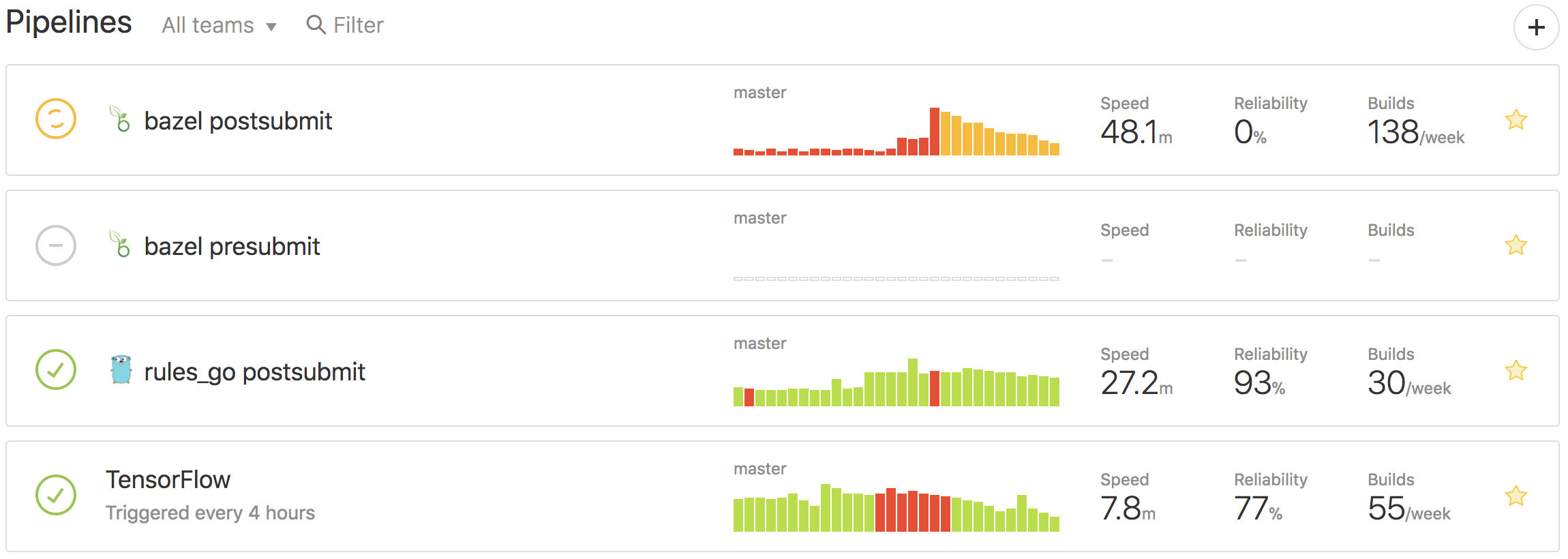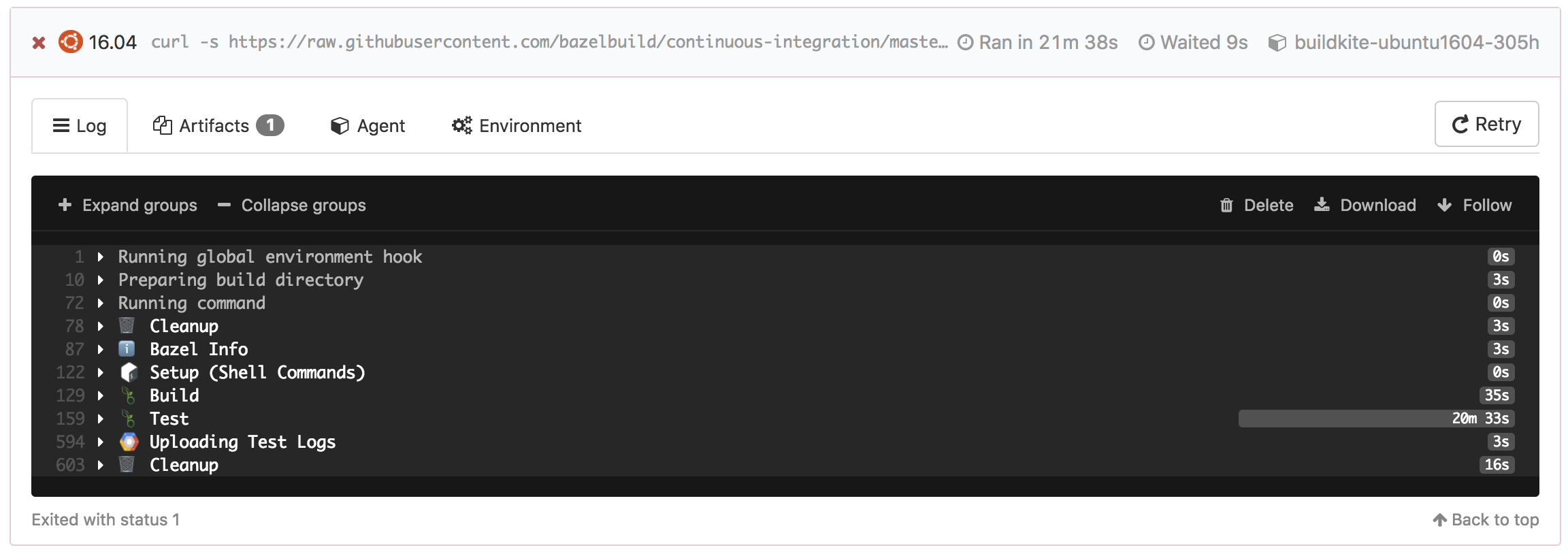Bazel uses Buildkite for continuous integration. The user interface and the orchestration of CI builds is fully managed by Buildkite, but Bazel brings its own CI machines. The buildkite folder contains all the scripts and configuration files necessary to setup Bazel's CI on Buildkite.
Buildkite currently does not support public viewing of build and test results (it‘s actively being worked on) and for now requires one to be logged in. In the meantime, we have set up a separate mechanism to view build and test results of pull requests and so as a contributor to Bazel you typically don’t need access to Buildkite. However, if you are a maintainer of a repository under the @bazelbuild organisation or a Bazel team member with sheriffing duties you probably do need access. Please ping either @buchgr, @philwo or @fweikert if you don't have access to Bazel on Buildkite but think you should.
When you first log into Buildkite you are presented with a list of pipelines. A pipeline is a template of steps that are executed either in sequence or in parallel and that all need to succeed in order for the pipeline to succeed. The Bazel organisation has dozens of pipelines. Here are a selected few:

HEAD every four hours.When you click on a pipeline you can see the last few builds of this pipeline. Clicking on a build then gives you access to the details of the build. For example, the below image shows a failed build step on Ubuntu 16.04.

One can see which tests failed by clicking on the Test section. In the below example, the //src/test/shell/bazel:external_path_test was flaky as it failed in 1 out of 5 runs.

You can view the failed test attempt's test.log file in the Artifacts tab.


Bazel accepts contributions via pull requests. Contributions by members of the bazelbuild organisation as well as members of individual repositories (i.e. rule maintainers) are whitelisted automatically and will immediately be built and tested on Buildkite.
An external contribution, however, first needs to be verified by a project member and therefore will display a pending status named Verify Pull Request.

A member can verify a pull request by clicking on Details, followed by Verify Pull Request.

Please vet external contributions carefully as they can execute arbitrary code on our CI machines
After a pull request has been built and tested, the results will be displayed as a status message on the pull request. A detailed view is available when clicking on the corresponding Details link. Click here for an example.

Bazel downstream projects is red? Use culprit finder to find out which bazel commit broke it!
First you should check if the project is green with the latest Bazel release. If not, probably it's their commits that broke the CI.
If a project is green with release Bazel but red with Bazel nightly, it means some Bazel commit broke it, then culprit finder can help!
Create “New Build” in the Culprit Finder project with the following environment variable:
eg.
PROJECT_NAME=rules_go PLATFORM_NAME=ubuntu1404 GOOD_BAZEL_COMMIT=b6ea3b6caa7f379778e74da33d1bd0ff6477f963 BAD_BAZEL_COMMIT=91eb3d207714af0ab1e5812252a0f10f40d6e4a8
Note: Bazel commit can only be set to commits after 63453bdbc6b05bd201375ee9e25b35010ae88aab, Culprit Finder needs to download Bazel at specific commit, but we didn't prebuilt Bazel binaries before this commit.